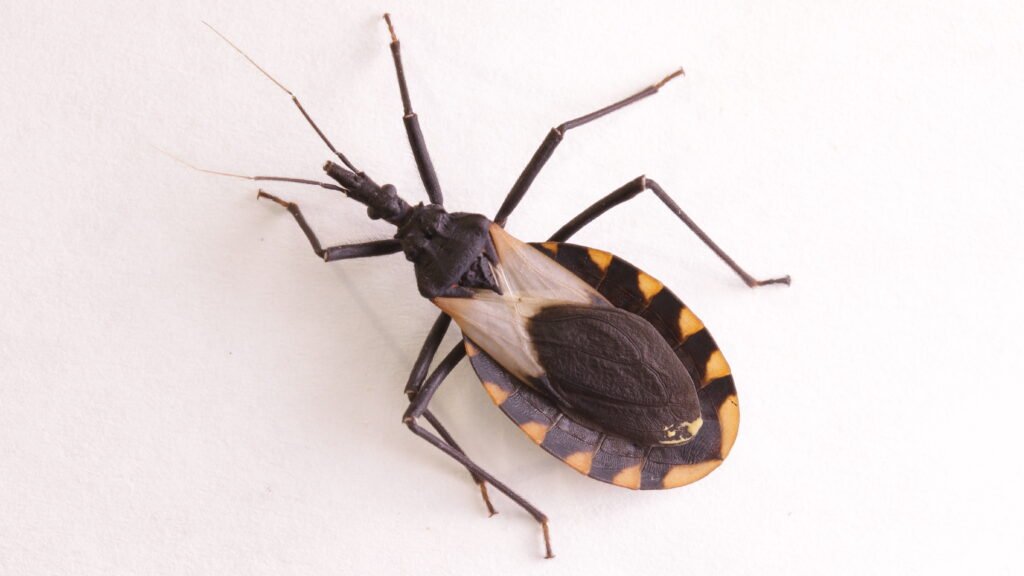Chagas Disease in U.S. Wildlife: A Growing Public Health Concern
In the heart of Illinois, during my research on wildlife disease, I stumbled upon a startling revelation that over half of the raccoons I sampled were infected with Trypanosoma cruzi, the parasite responsible for Chagas disease.
Chagas disease, a neglected tropical disease, is no longer limited to tropical regions. It has made its way to the United States, silently spreading among wildlife. This disease can remain dormant in the human body for years before manifesting as heart failure, stroke, arrhythmias, or even sudden death. The parasite is primarily transmitted by triatomine insects, also known as “kissing bugs,” which feed on the blood of infected animals like raccoons, opossums, and rodents. These insects defecate near their bite site, and if the feces come into contact with broken skin or mucous membranes, the parasite can infect humans. In rare cases, Chagas disease has also been transmitted through organ transplants, blood transfusions, and congenital exposure.
While Chagas disease is a major public health concern in Latin America, it remains largely overlooked in the United States. The Centers for Disease Control and Prevention (CDC) estimates that approximately 300,000 people in the U.S. are infected with Trypanosoma cruzi, with many of them being unaware of their infection status, especially those born in endemic regions of Mexico, Central America, and South America.
Contrary to the popular belief that Chagas disease only affects immigrants or travelers, recent research, including my own findings in U.S. wildlife, suggests otherwise. Studies have detected infected kissing bugs and mammalian hosts in various states such as Texas, California, Louisiana, and the Midwest, indicating active circulation of T. cruzi in U.S. wildlife.
While the presence of Trypanosoma cruzi in raccoons and kissing bugs does not guarantee human infection, the ecological conditions for disease spillover exist. There have been confirmed or suspected cases of locally acquired Chagas disease in the U.S., particularly in states like Texas, Arkansas, Missouri, Louisiana, and California. Recent field studies have also shown a high prevalence of T. cruzi in kissing bugs found inside homes, raising concerns about potential human-vector contact and transmission.
With the changing climate and landscape, the risk of human contact with infected kissing bugs is on the rise, especially in areas where homes border wooded landscapes or have features that attract these insects. As such, monitoring these risk factors is crucial to prevent disease spillover.
Despite the growing threat of Chagas disease in the U.S., awareness among healthcare providers and the general public remains low. Routine testing for Chagas disease is scarce, and most infections are only detected incidentally, such as during blood donor screening.
Early detection is key in managing Chagas disease, as it is treatable with antiparasitic medications like benznidazole if caught early. To address this emerging public health crisis, we need to prioritize:
– Awareness campaigns to educate clinicians and the public
– Expanded diagnostic access in high-risk regions
– Targeted screening for patients with unexplained cardiac issues in endemic zones
– Continued wildlife surveillance to monitor the spread of the disease
Chagas disease has all the hallmarks of an impending public health crisis, including silent spread, climate-driven expansion, low awareness, and long-term health implications. It is essential to take proactive measures now to prevent a larger outbreak in the future.
As a researcher in biological sciences focusing on public health, my work has shed light on the presence of Trypanosoma cruzi in U.S. wildlife. It is time to stop underestimating Chagas disease and treat it with the seriousness it deserves.
Esther Onuselogu, M.Sc., is dedicated to raising awareness about infectious diseases and promoting public health equity.


